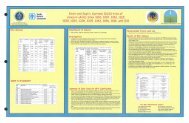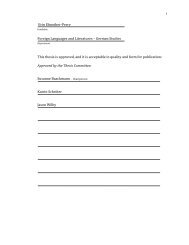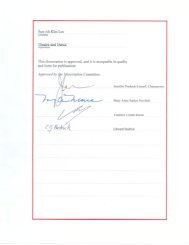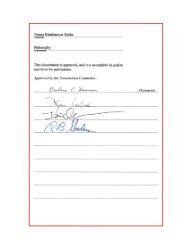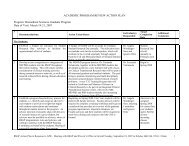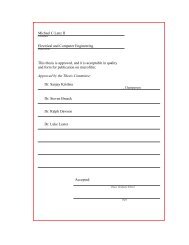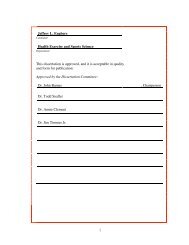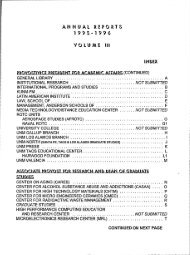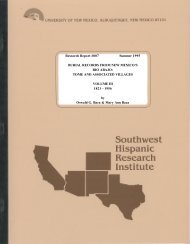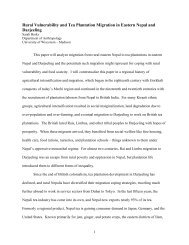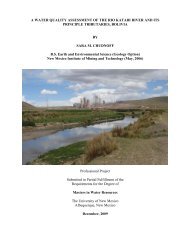Anil Reddy Geeda Electrical and Computer Engineering This thesis ...
Anil Reddy Geeda Electrical and Computer Engineering This thesis ...
Anil Reddy Geeda Electrical and Computer Engineering This thesis ...
You also want an ePaper? Increase the reach of your titles
YUMPU automatically turns print PDFs into web optimized ePapers that Google loves.
When signals A <strong>and</strong> B are the same, then the power spectrum is equivalent to the cross<br />
power spectrum <strong>and</strong> so power spectrum is often referred to as the auto power spectrum or<br />
the auto spectrum.<br />
The amount of energy present at a specific frequency b<strong>and</strong> is autospectrum. It was shown<br />
by Fourier that autospectrum can be computed by multiplying each point of the raw data<br />
by a series of cosines, <strong>and</strong> independently again by a series of sines, for the frequency of<br />
interest. The average product of the raw-data <strong>and</strong> cosine is known as the cosine<br />
coefficient of the finite discrete Fourier transform <strong>and</strong> the average product of the raw-<br />
data <strong>and</strong> sine is known as the sine coefficient. These cosine <strong>and</strong> sine components express<br />
the relative contributions of each frequency. The basic constituents of all spectral<br />
calculations are these cosine <strong>and</strong> sine constituents. For a real sequence {xi, i = 0,<br />
……..,N-1} where Δt is a sample interval <strong>and</strong> fi is the frequency, then the cosine <strong>and</strong> sine<br />
transforms are calculated as:




